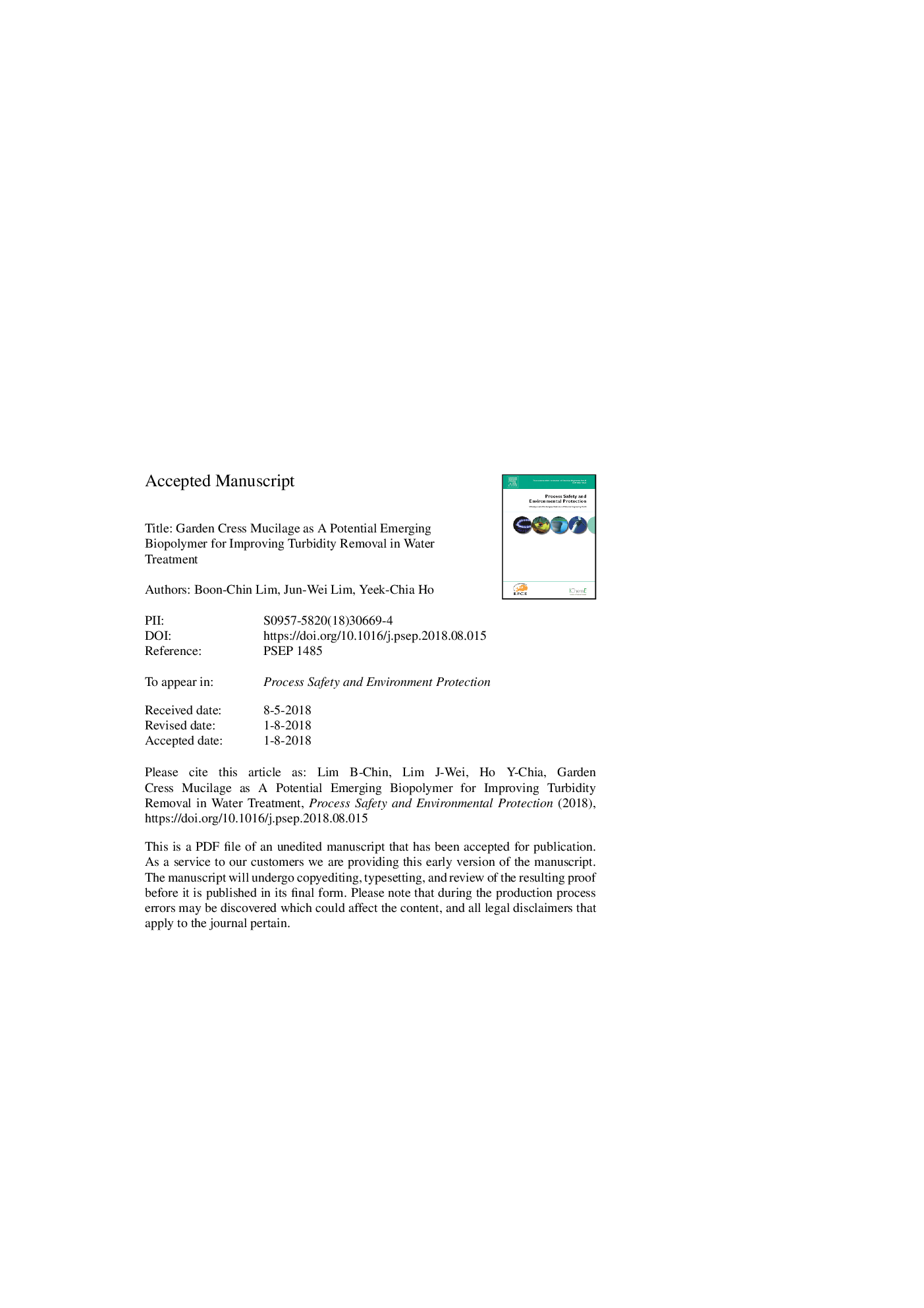| Article ID | Journal | Published Year | Pages | File Type |
|---|---|---|---|---|
| 11003063 | Process Safety and Environmental Protection | 2018 | 23 Pages |
Abstract
Agricultural anthropogenic processes have resulted in high turbidity to nearby river water. This study aims to study the possibility and mechanism of biopolymer extracted from garden cress (Lepidium Sativum sp.) seed as natural coagulant aid in a point source agriculture wastewater discharge. Various physico-chemical characterisation studies were conducted i.e. functional group, zeta potential and surface floc morphology. FTIR spectra results indicated the biopolymer was assigned to band peaks at for hydroxyl, carboxyl groups. Whilst, zeta potential was around â16âmV, describing its anionic nature. The morphologies study depicted that the addition of biopolymer produced a more compact and larger structure of the settled sludge. Influence of pH, dosage of Fe3+ and biopolymer were studied in synthetic kaolin and agricultural wastewater using factorial design. pH, dosage of Fe3+ and biopolymer significantly affect the turbidity removal in coagulation process with p-valueâ<â0.05. While, optimized setting is at pH 5, concentration of Fe3+ is at 50âmg/L and concentration of biopolymer is at 15âmg/L for turbidity removal of 99.32%. Interestingly, it could achieve more than 92% turbidity reduction within one-minute settling time at pH 6, concentration of Fe3+ is at 8-10âmg/L and concentration of biopolymer is at 2.8-5.0âmg/L.
Related Topics
Physical Sciences and Engineering
Chemical Engineering
Chemical Health and Safety
Authors
Boon-Chin Lim, Jun-Wei Lim, Yeek-Chia Ho,
